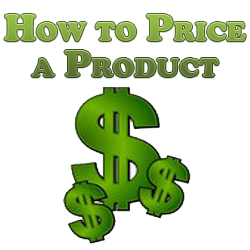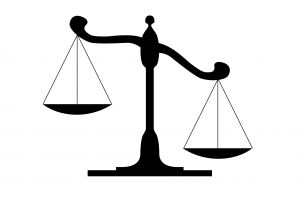We’ve covered the basics so far on how to create a product and even the aesthetic aspect of how to make a cover for your eBook. Let’s not forget one of the most important aspects of your product: it’s price!
How to Price a Product
In this article we’ll take a look at how to price a product using new product pricing strategies to use with your new product to find that magical sticker price which will both maximize conversions and make you the most money.
You likely already have some ideas about how to price your product. If you’re not sure, then your best bet is to check out the competition. Check out other products similar in format to yours and specifically other products within your niche. This will give you a good starting point.
Also, NEVER price something at $30 when it can be priced at $29.95. That “3” can subconsciously turn a person off whereas they’ll have no problem with a $29.95, and while it’s only a difference of 5 cents, it can make a substantial impact on and different in your conversion rate.
While on the topic of $29.95, there’s something about that $29.95 price point which works very well for informational products and which is very attractive to consumers and has been proven to convert well amongst online marketers who use it. It’s at a price point which both instills a higher level of perceived quality in the consumer but at the same time it’s not too expensive at still being under $30, so most people are able to justify an impulse purchase of $29.95 if they think it will solve whatever problem they’re having whether that’s curing pimples or learning a new skill.
The best new product pricing strategy which you can employ is to split test multiple prices. Charge one price for the first month or first 10,000 visits (long enough to get a decent sample size), then up the price by a bit for that same sample size. Oftentimes you’ll be surprised to see your conversions INCREASE after raising the price because the perceived value is closer to the new price than the older/cheaper one.
Track your results and remember to divide the traffic to the sales page by the number of sales to reflect the dates ranges in which you used both prices individually. In other words, you can’t just take a look at the number of sales which you generate at each price point and call that the be all end all.
Ultimately it’s all about getting as many affiliates as possible while getting as many sales as possible. If the price of your product is too low (coupled with the commission percentage which you’re offering), you won’t attract as many affiliates, but if the price of the product is too high, you’ll scare off anyone from buying the product which will in turn scare off new affiliates who operate under the assumption that gravity is everything (see what is Clickbank gravity for more information).
One final note, if you’re not making as many sales at the higher price as you’d like and you think the product is truly worth that higher price, take a look at your sales page. The sales page is your main advertisement for your product, and if it’s written poorly then you could have the cure for cancer and yet no one would buy it.
Conversely, a great and effective sales page can sell utter garbage and for a hefty fee. That garbage product will have a near 100% refund rate, but it’s just to exemplify how important that sales page and more specifically how important the presentation of your product is in that it trumps everything else in dictating how many sales you generate.
I’ll be testing multiple price points between $19.95 and $29.95 and report my results here in the future after I’ve collected enough analytical data to give conclusive results.
